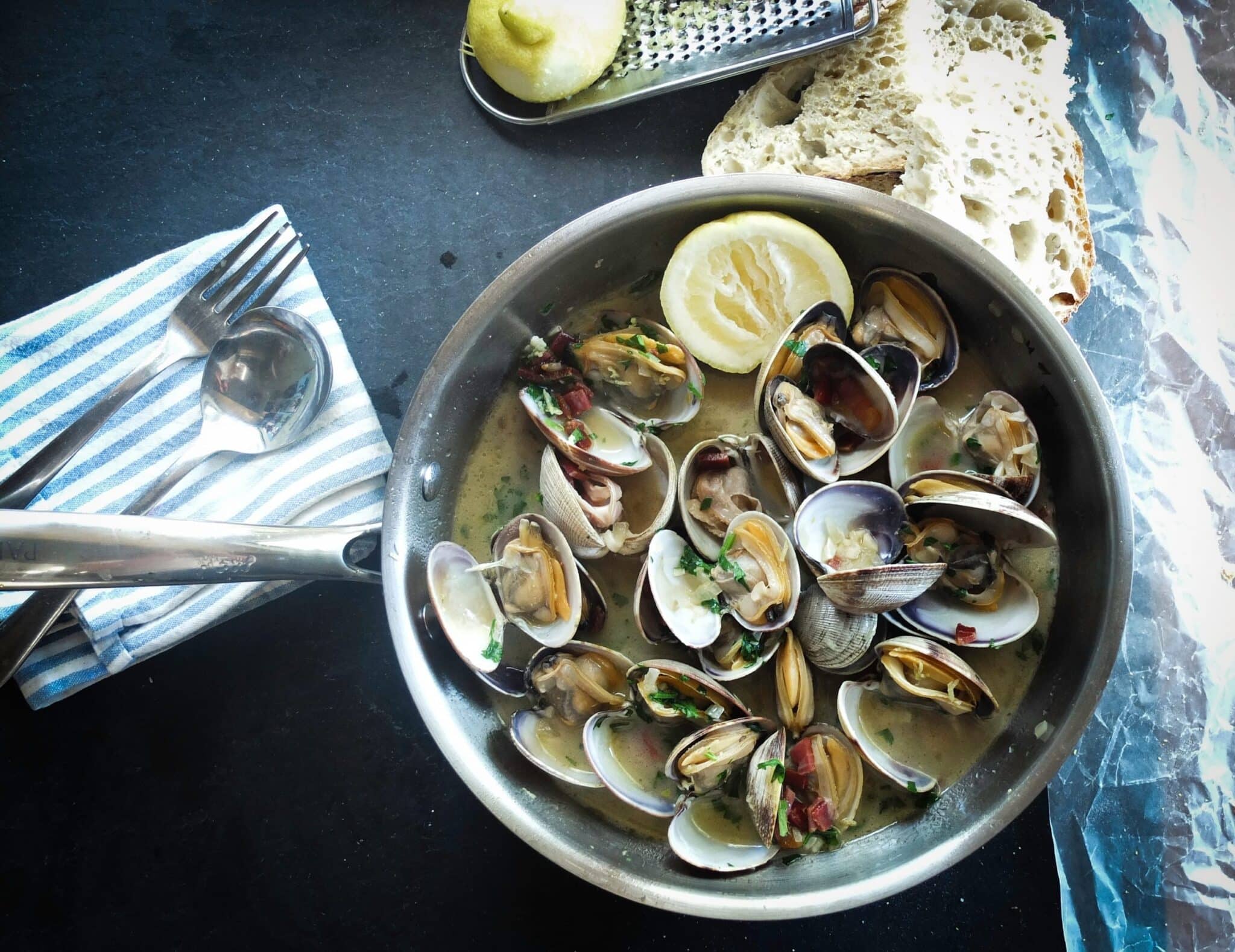
Maine littleneck clams are prized for their tender, plump, juicy meat. Littleneck clams fit the bill for a hearty chowder, a delicious appetizer, or part of a quintessential clambake. If you consider littleneck clams for a summer fare, look no further than Klenda Seafood. We procure sustainably sourced, wild-harvested clams from the diggers who work the flats along the Maine coast.
Here’s everything you need to know about Maine Littleneck Clams:
What Are Littleneck Clams?
Maine Littleneck Clams are a native species found along the coast. The name “littleneck” refers to its size, not a specific clam species. Littlenecks are smaller or younger Atlantic hard shell clams measuring one to two inches across. All Atlantic hard shell clams are distinguished by names that relate to their age and size. Quahogs, for example, are the largest Atlantic hard shell, followed by cherrystones and topnecks, and then little necks, which are the smallest. Like all clams, the Atlantic hard shell is a bivalve mollusk with two symmetrical halves.
Where Do Maine Littleneck Clams Come From?
Littlenecks derive their name from where they were first harvested at Long Island’s Little Neck Bay. However, the range of little neck clams is extensive, from the Gulf of St. Lawrence to Florida. They are especially abundant in Maine’s clam flats—the muddy, sandy, and gravel beds within the intertidal zones. Clamming in Maine is regulated by the Department of Marine Resources (DMR) and a few coastal towns via a shellfish conservation ordinance. Many towns require recreational licenses from the town office or municipal shellfish warden. Though the season is year-round, Maine littlenecks are popular during summer.
How Are Littleneck Clams Harvested?
Some say digging for clams is like hunting for buried treasure with the clock ticking—a constant race against the tide before it rises and floods the clam flats—a process of digging and raking harvests littlenecks. Independent clam diggers work in the flats with a clam rake for the mud or trowels in gravelly sand and a bucket. Littlenecks are generally harvested in two areas—out on the clam flats or along the banks of channels and inlets. You’ll find diggers out raking for them at dead low tide.
How Can You Cook Maine Littleneck Clams?
Maine littleneck clams are exceptionally flavorful; many consider them the best seafood the state offers. They are ideal for stews, chowders, or added to your favorite pasta dish. They can be served raw on the half shell or with melted butter as an appetizer. They are also delicious when cooked and very easy to prepare. Some tips for cooking littleneck clams include the following:
- Keep your live hard shell clams chilled in the refrigerator and covered with damp kitchen towels until you’re ready to cook them.
- Never submerge them in fresh water. Chill on direct ice, or they will die.
- First, scrub and rinse the clams of mud and sand in the briny water. Then, add 5 cups of cold water and the clams in a large saucepan, and bring the water to a boil. Skim the foam off as it boils.
- Once the water comes to a full boil, the clams should begin to open in a couple of minutes, which means they are done. Drain and serve.
- To steam, fill a stockpot to a 1/4 inch of water (or use beer or white wine) and bring it to a boil. Add the clams and cover the pot with a snug-fitting lid. As with boiling, once shells are open, they are cooked.
What Are the Benefits of Eating Littleneck Clams?
Considered a nutritional whole food, there are many benefits to eating littleneck clams. Low in fat and calories, lean in protein, high in Omega-3 fatty acids, with an excellent source of minerals and vitamins, they are a healthy addition to any diet. Little neck clams contain vitamins C, B12, and A and are rich in minerals like iron, zinc, selenium, potassium, and calcium. As a bonus, clams are also low in mercury.
Don’t forget you can order FRESH live lobsters or fresh-picked meat online for delivery directly to your door. We also offer curbside pick-up at our South Portland location if you live locally – call for details and to place your order over the phone! Feel free to contact us— we would be happy to answer any of your questions.
